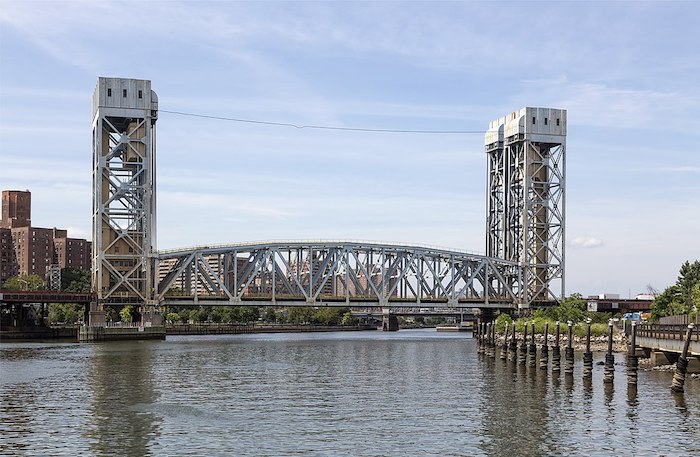
How clean are New York City’s open waters? That depends on whom you ask. So does the question of what ought to be done to get them cleaner.
On Wednesday evening at the CUNY Law School in Long Island City, the city’s Department of Environmental Protection will release its Open Waters Long-Term Control Plan, which covers the Hudson River, Harlem River, Upper and Lower New York Bay, Arthur Kill and Kill van Kull, East River, and the western portion of Long Island Sound.
It’s the last of a dozen plans the city has prepared charting steps it will take—and money it will spend—over coming years to try to finally get all the city’s waterways to comply with the Clean Water Act, which seeks to make all water swimmable and fishable.
The discussion will revolve around technical terms like “enterococci” and “bending weirs” but its outcome will affect every New Yorker in two ways: in the water bills they pay directly as property owners or indirectly through rent, and in how they are able to use the waterbodies that shape and define the city.
It’s about CSOs
The biggest obstacle to clean water in the city has been its combined sewer system, an older network of pipes serving some 60 percent of the metropolis. Combined sewers put wastewater from toilets, bathtubs and sinks into the same pipes as rainwater. When its rains heavily, the combined volume of water can overwhelm sewage treatment plants, so the system releases excess water without treating it. Those so-called combined sewer overflows (CSOs) add up to billions of gallons of untreated water getting released every year into the city’s rivers, creeks, bays and canals.
After decades of pressure from federal regulators and local advocates, the city agreed earlier this century to create plans to improve each waterbody affected by CSOs. It has so far prepared—and received state approval for—long-term control plans (LTCPs) for the Bronx River, Paerdegat Basin, Gowanus Canal, Newtown Creek and Jamaica Bay, among others.
Even before those plans were written, some steps the city took had already reduced CSOs somewhat. The new plans approved so far, which together will cost the city an estimated $5.2 billion, promise varying levels of progress in reducing CSOs further.
The city, which funds sewage work out of property owners’ water bills, has argued that any additional progress would be too costly. Advocates have countered that more aggressive use of green infrastructure would generate real benefits and cost less.
The argument is as much about how the city measures the extent of its pollution problem as it is about the plan it has adopted to address it. The same dynamic is playing out in the discussion about the citywide or “open waters” LTCP.
Assessing alternatives
In a modest concession to pressure from advocates who said DEP’s process in designing the control plans was too opaque, the agency agreed to release a report on its “retained alternatives”—the policy options it is actually considering for the open waters plan—and accept comment on them before announcing its final decision.
DEP released those ideas in October. That report gathered data on water quality (or WQ, in the vernacular of water-policy types) for the open waters and found that “baseline WQ shows high levels of attainment with applicable [water quality standards” with a few exceptions, namely the Upper and Lower Bay and Arthur Kill and Kill van Kull, located between Staten Island and New Jersey. DEP concluded that even stopping all CSOs “will not fully attain WQS due to other bacterial sources” and that “large-scale, expensive CSO control alternatives will provide minimal improvement in [water quality standards] attainment in most areas.”
As a result, the plan DEP proposes focuses on “lower-cost system optimization.” Out of a large toolbox of possible policies that included disinfecting the overflows or building big retention basins to hold the extra water for treatment, DEP has said it will build storage tunnels, improve “floatables” control and make low-cost tweaks to the existing system to unlock more capacity during heavy rains.
Some advocates contend DEP’s picture of today’s water conditions is too rosy, and its plan for the future insufficiently ambitious.
“DEP appears to be using a number of questionable methods in its water quality analysis that can significantly skew the results,” the S.W.I.M. Coalition, a large collection of advocacy organizations that’s been a major voice in the LTCP process. “These include relying on selective water quality samples that are likely to miss the highest levels of pollution; using questionable modeling methods; and cherry-picking model results to obscure likely pollution hotspots.”
The coalition also argues the city is counting on its existing green infrastructure program to contribute more than it is actually likely to, given obstacles that program has encountered. There are also concerns that the city is underestimating the impact of climate change—and the likelihood of more frequent, more intense rainstorms—and using “as-yet unaddressed pollution from other sources, in both NYC and New Jersey, as an excuse not to maximize its own CSO reductions.”
More public input welcome?
In its official response to comments on the October plan, DEP defends its methodology, saying it’s in line with what state regulators have required. On the impact of climate change, the agency says that it based rainfall estimates on 2008 amounts—and notes that rainfall in the city from 2010 through 2018 was actually less than 2008, making that year a decent proxy for a wetter future.
DEP’s responses note more than once that key details will be unveiled in the plan released later Wednesday.
For that very reason, advocates are repeating a demand they have issued for years: Let the public see and comment on the final plan before it is submitted to the state for approval.
“The public needs an opportunity to review the full draft LTCP before it is sent to the state, or we will not be able to provide educated input on the plan,” S.W.I.M. insists.








